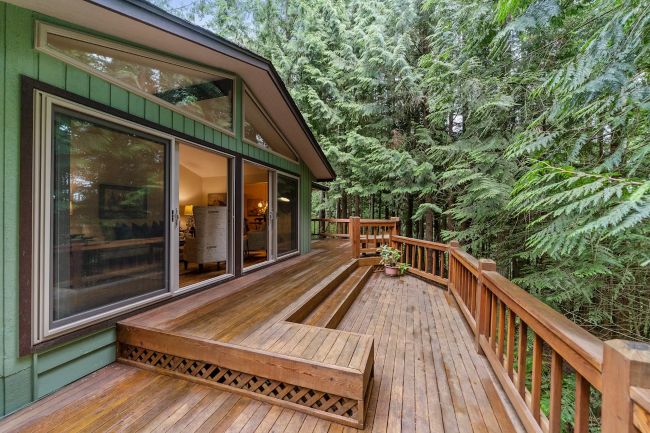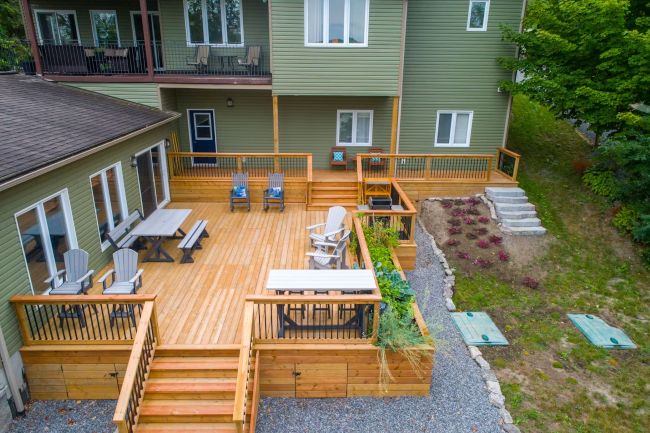Built to Last: How the Right Materials Can Save Your Deck
When investing time and money into a deck, longevity should always be at the forefront of every decision. Outdoor structures face the full force of seasonal extremes, constant exposure to the elements, and the wear of everyday use. Without the right materials, even the most beautifully designed deck can fall prey to warping, cracking, rot, and premature replacement. The secret to avoiding these costly issues lies in material selection. What your deck is made of determines how well it holds up over time, how safe it remains for use, and how often you’ll find yourself repairing or replacing sections. Thoughtful choices at the start can spare years of maintenance headaches later on.

Prioritize Resistance to Water Exposure
When choosing decking materials, one factor stands above the rest: how they respond to prolonged exposure to water. Whether from rainfall, morning dew, or splashes from a nearby pool, water is a relentless force against wood and composites. Choosing materials that repel or tolerate water can dramatically reduce the risk of swelling, rot, and structural weakness. A growing number of homeowners are replacing traditional timber with plastic-based decking. These materials are less likely to absorb water and show fewer signs of warping or decay over time. Composite options are popular, but high-quality plastic boards are taking center stage. They’re manufactured to repel water, resist cracking, and avoid the color-fading effects of sun and rain. When evaluating suppliers, working with NECS Plastics UK makes sense in the middle of the conversation about water-resistant options, as their products are engineered for durability and weather endurance. Selecting solutions that outperform standard wood ensures your deck remains safe, stable, and attractive for years.
Think Beyond the Surface: The Importance of Substructure
The boards you walk on are only part of the story. A deck’s longevity often hinges on what lies beneath. Joists, beams, and posts carry the weight of the structure and endure as much environmental stress as the surface. These elements need to be just as robust, if not more, than the visible materials. Many homeowners focus on top-layer finishes and forget that untreated or low-quality support components are just as vulnerable to failure.
Steel and pressure-treated lumber are frequently used for the substructure, but even these materials can corrode or rot if they’re not properly chosen or installed. Using galvanised steel or high-grade treated timber that’s rated for ground contact can significantly extend the lifespan of the entire build. If you’re investing in premium decking boards, pairing them with a neglected frame only creates a false sense of durability. A solid foundation, built with quality in mind, prevents sagging, creaking, and dangerous instability in the years ahead.
Durability is in the Details: Fasteners and Fittings
No deck is held together by boards alone. Screws, brackets, and hidden fastening systems carry the burden of structural integrity. These often-overlooked components face constant movement, vibration, and exposure. If fasteners rust or break, the entire structure can become compromised, leading to loose boards or, in extreme cases, partial collapse.
Stainless steel or coated screws offer greater protection than standard nails or untreated metal. Look for materials that resist corrosion and maintain a firm grip through seasonal expansion and contraction. Hidden fastening systems provide a cleaner look and can reduce snagging or loosening. It’s not just about holding everything together; fasteners directly influence how your deck performs through years of use. Investing in the right fittings might seem minor, but it’s one of the smartest moves in building a structure that won’t give way to the first storm or shifting ground.
Adapt to Your Climate

Decking material isn’t one-size-fits-all. What works for a dry inland region might crumble in a coastal environment. Materials react differently to salt, humidity, extreme cold, or high UV exposure. Knowing what your deck will face across the seasons makes a big difference in how well it holds up.
In colder climates, freeze-thaw cycles can cause wood to split and metal to contract. In hotter areas, UV rays can bleach and weaken surface finishes. High-humidity regions need materials that don’t expand excessively. Plastic decking and UV-resistant coatings are often better suited for such variability. Understanding the specific environmental pressures in your area allows you to choose materials that won’t just survive but remain stable and safe year-round. A deck that looks great after installation but can’t adapt to weather changes will age quickly and unevenly.
A deck is more than just an extension of your home; it’s an investment in comfort, usability, and long-term value. By focusing on materials built to endure and suppliers that offer performance-driven solutions, you create a deck that isn’t just designed for now but built to last.


